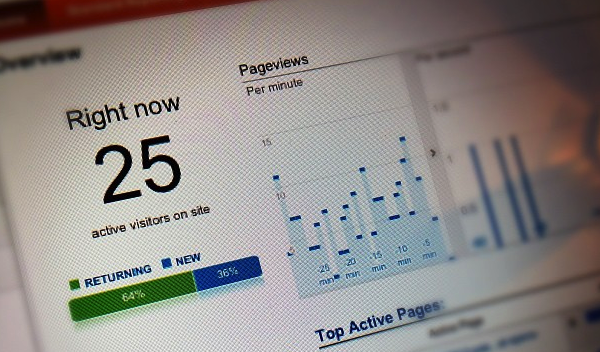
( Image source: thecollegestartup.com )
In the old days, top businesses reviewed month-old data to make adjustments in the next quarter. Today, top businesses are reviewing real-time data to make adjustments in the next few minutes. Is your company ready for real-time data?
Techopedia defines real-time data this way:
“Real-time data refers to data that is presented as it is acquired … Real-time data does not promise data within a certain number of microseconds. It just means that the data is not designed to be kept back from its eventual use after it is collected.
“Real-time data is enormously valuable in things like traffic GPS systems … (W)ith the proliferation of mobile devices and other advancements in technology, it is becoming more common for software to simply port collected data directly to the end user.”
How Real-Time Data is Changing Business
1. Operations
Manufacturers use real-time data to monitor production and post-production equipment, spotting malfunctions and bottlenecks as they occur. Immediate recognition of problems enables manufacturers to improve quality, maintain maximum production efficiency, and prevent small errors from becoming big problems that devastate the bottom line.
Similarly, distribution and fulfillment operations use real-time data to monitor product delivery through the entire distribution chain. If an accident along a truck’s route figures to delay delivery, the truck can be rerouted, maintaining the schedule and a consistently high level of reliability.
The ultimate value of real-time data in both examples: heightened customer satisfaction, better customer retention and higher profits.
2. Sales and Marketing
Call centers use real-time data to monitor and display performance versus goal to managers and staff. This immediate feedback and transparency motivates phone personnel, and enables managers to make adjustments on the fly. Result: stronger, more consistent performance, higher levels of customer service, and improved employee engagement.
Marketers in B2B and B2C collect and interpret real-time data for social media mentions, website traffic and form/phone submissions to evaluate and make immediate adjustments to marketing campaigns and content — enabling them to protect brand reputation, increase brand awareness, improve website lead generation and revenue production at lightning speed.
3. Health Care
Hospitals and health care facilities collect real-time data for patient monitoring of blood pressure, respiration, heart rate and other relevant indicators to improve the level of patient care, and to detect and prevent complications.
Behind the scenes, health care operations use real-time data to monitor operational activities such as new patient arrivals, make room assignments and schedule operating rooms. The result: more efficient handling of patients, higher levels of attentiveness and an improved overall experience for patients and their families.
4. Retail
Brick-and-mortar retailers have returned to the technological forefront, for example, by using real-time, personalized data and interactive digital displays for suggesting related items of interest based on a shopper’s order history. Personalization enhances the shopping experience, drawing new customers in and bringing old ones back.
5. Higher Education
Perhaps the most significant application for digitally networking real-time data in this arena: emergency response. Whether a campus is dealing with an extreme weather event or some other type of threat, the ability for emergency response teams to communicate campus-wide with up-to-the-second information and instructions is invaluable.
Implementing Real-time Data
The technology to capture and deliver real-time data is available. The ease of implementing it within an organization depends a great deal on both its current technology infrastructure and its culture.
Organizations that have a culture where operational flexibility, openness to change and relentless pursuit of customer satisfaction have an advantage in adapting their systems to put real-time data to its best use.
Regardless of your current technology and culture, embracing real-time data is quickly moving from a wish-list item to a necessity for survival. As real-time data applications become commonplace for consumers (GPS mapping, smart appliances, etc.), customers will demand real-time responses from suppliers and service providers. Organizations that develop real-time data superiority will gain a strong and perhaps insurmountable market advantage.
Author bio: Kerwin Everson understands how vital technology is to the supply chain as Vice President of Supply Chain Solutions at RMG Networks. Everson’s goal is to educate supply chain operations on the value of visualizing real-time performance management to improve productivity and efficiency.


